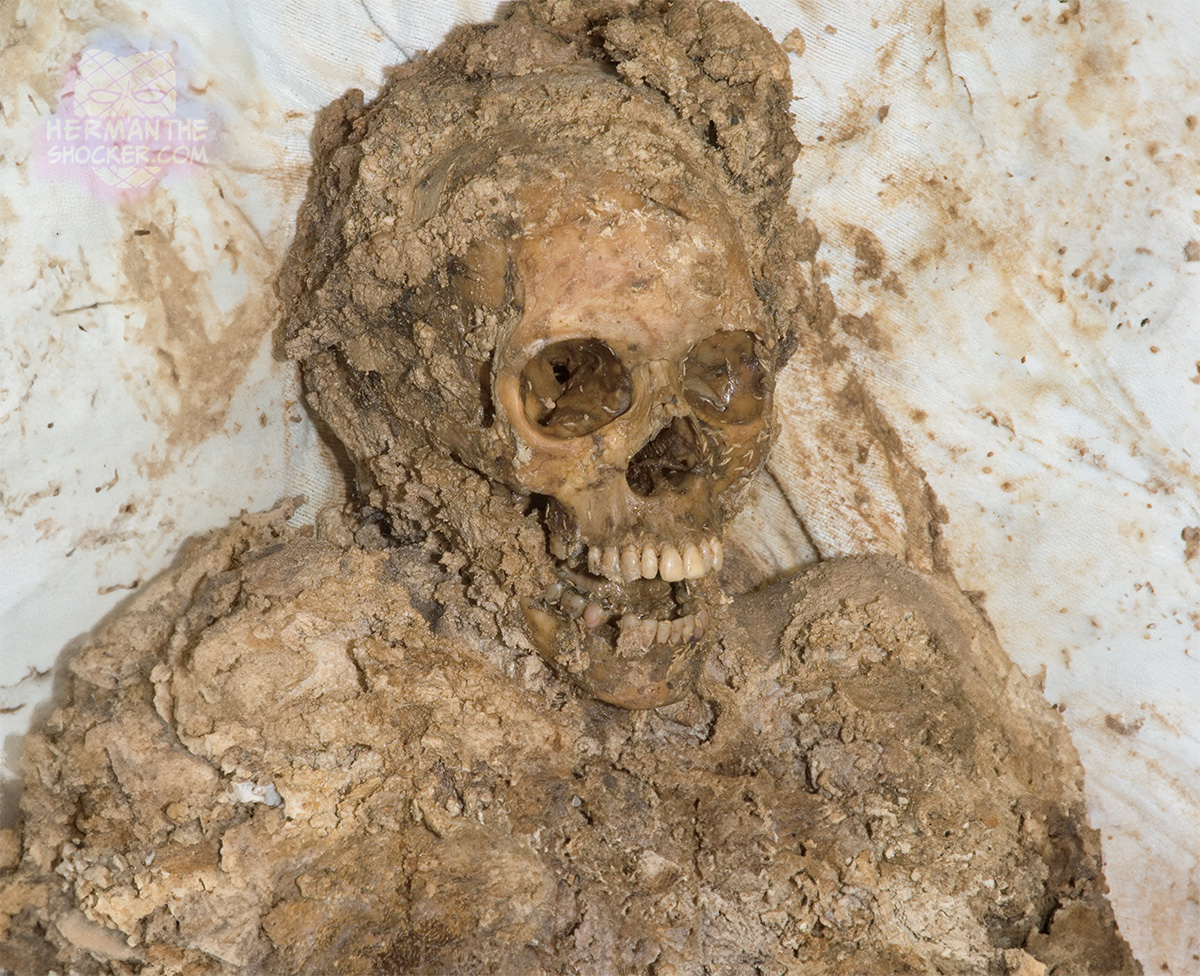The image shows adipocere on the remains of an individual recovered from moist environment. Adipocere, also known as corpse wax, grave wax or mortuary wax, is a wax-like organic substance formed by the anaerobic bacterial hydrolysis of fat in tissue, such as body fat in corpses.
Adipocere formation may occur in wet or immersed bodies. Adipocere is a yellow-brown, waxy material composed of long chain hydrocarbons such as oleic, palmitic, and stearic acids. It is produced by the conversion of neutral lipids to these compounds as part of the putrefaction process. Both enzymes in the body and within bacteria contribute to the conversion of lipids present in the body to the components of adipocere.
Inadequate oxygen combined with a surplus of lipids results in insufficient microbial degradation. Adipocere has a characteristic appearance and is generally resistant to further decomposition. The formation of adipocere usually occurs over a somewhat lengthy postmortem period, typically several months. However, relatively rapid formation of adipocere has been described.
Latest posts








